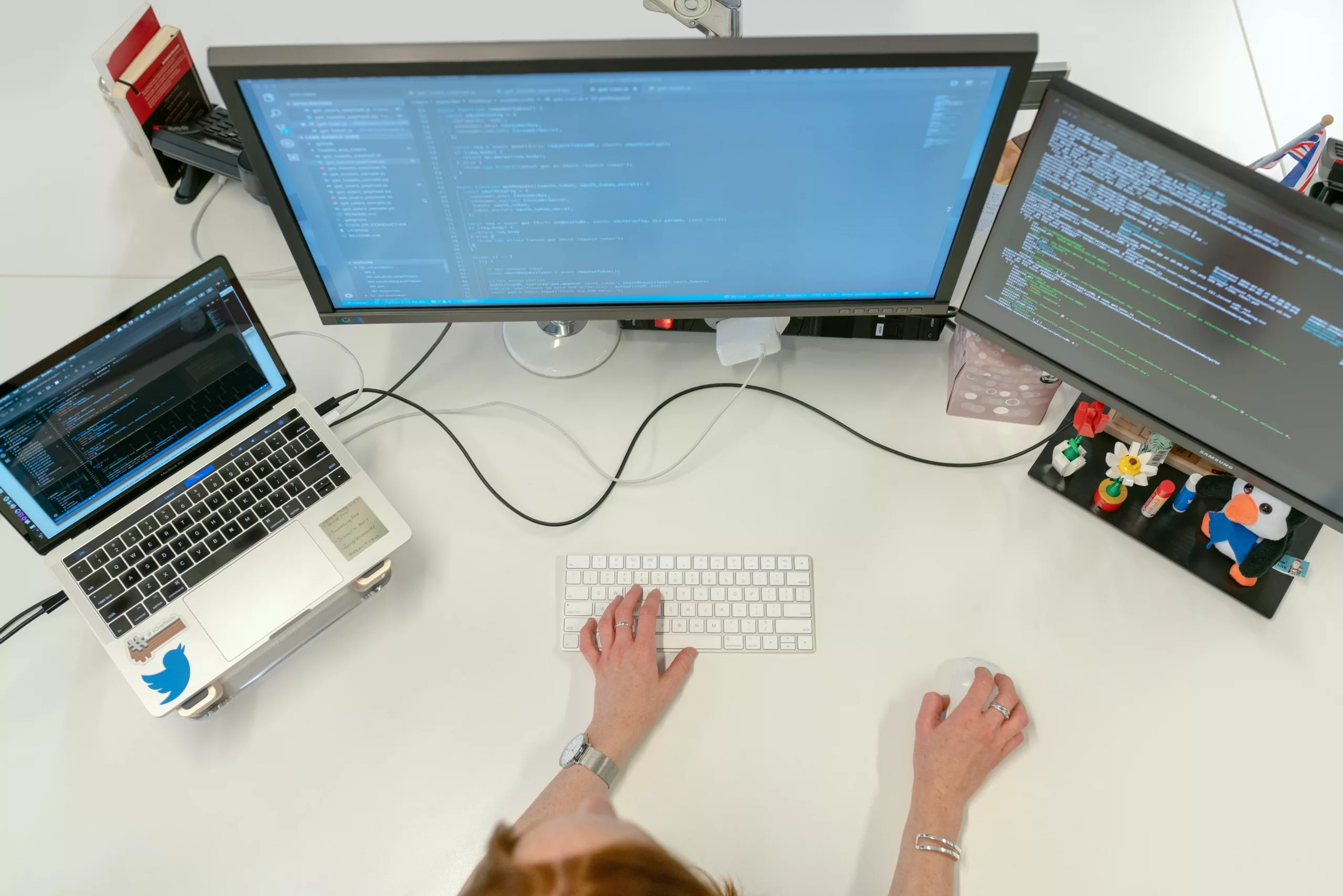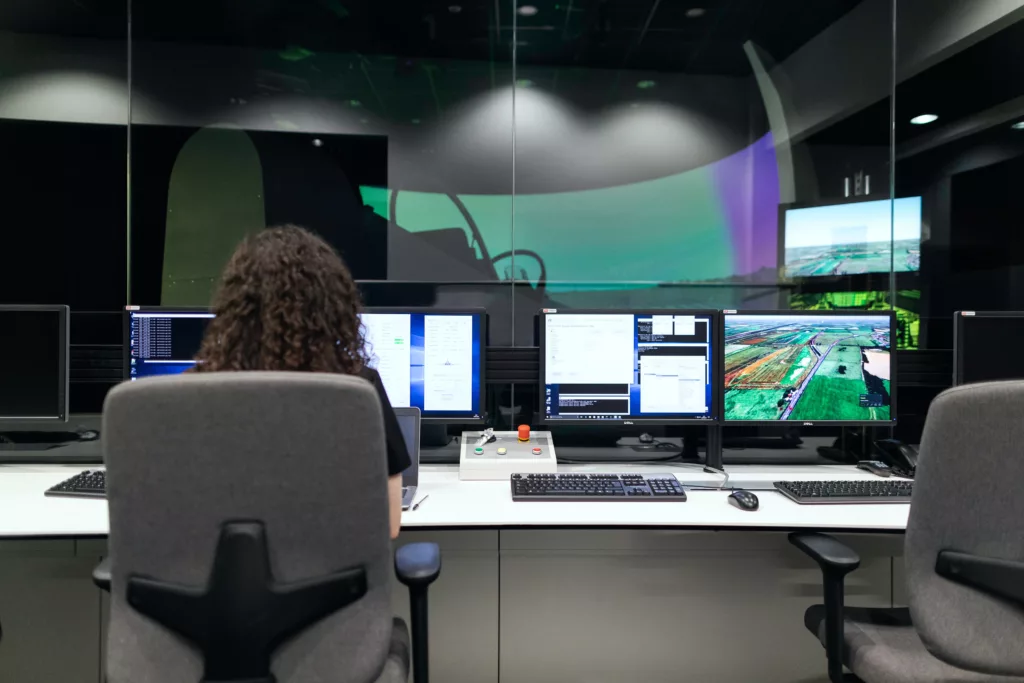The essence of this transformation lies in the way software houses are adapting to the changing needs of remote work environments, cybersecurity, and software lifecycle management. The rise of remote collaboration tools has redefined the traditional workspace, enabling teams to work efficiently from anywhere in the world. This shift is not just about geographical flexibility; it’s about harnessing the power of digital tools to foster collaboration, creativity, and productivity in ways that were previously unimaginable.
In tandem with these developments, software lifecycle management is witnessing a revolution of its own. Agile methodologies, once considered avant-garde, are now the norm, with continuous integration and delivery models taking center stage. These methodologies are not just about speeding up the development process; they are about ensuring quality, adaptability, and customer-centricity in software products.
Moreover, as software becomes increasingly integral to every aspect of business and personal life, cybersecurity has emerged as a critical concern. Software houses in 2024 must navigate a landscape rife with sophisticated cyber threats, necessitating a proactive and comprehensive approach to security. This involves not only protecting data and systems but also embedding security into the very fabric of the software development lifecycle.
Staying ahead in this dynamic environment requires a keen understanding of emerging trends and an agile approach to technology and management. Software houses that can anticipate and adapt to these changes will not only survive but thrive, carving out a niche in an ever-evolving digital ecosystem. As we delve deeper into 2024, it’s clear that the ability to innovate and evolve is not just a competitive edge – it’s an imperative for success in the modern digital age.

Innovations in Software Lifecycle Management
New Directions in Software Creation and Launch
As we venture into 2024, the domain of software creation and launch is witnessing a series of novel trends that are redefining the essence of the software lifecycle. These developments are a testament to the industry’s adaptation to the ever-changing technological landscape and market requirements.
- AI-Enhanced Software Crafting Tools: The realm of software development has been revolutionized by Artificial Intelligence (AI). Tools augmented with AI capabilities have become a norm, boosting coding productivity, streamlining testing procedures, and efficiently handling bugs. Leveraging machine learning, these tools can generate initial code structures, minimize human error, and expedite the development cycle.
- Accessibility through Low-Code and No-Code Solutions: The emergence of low-code and no-code solutions has transformed software development into a more inclusive field. These solutions, featuring intuitive graphical interfaces for constructing applications through simple drag-and-drop actions, facilitate the swift creation of applications. This is particularly advantageous for businesses aiming for rapid adaptation to fluctuating market scenarios.
- Inherent Cybersecurity Measures: In an era of escalating digital threats, embedding robust cybersecurity protocols from the onset of a project is imperative. This encompasses the implementation of advanced encryption, stringent access controls, and ongoing surveillance. Proactive vulnerability detection using AI-driven systems is also a key strategy.
- Edge Computing and Decentralization in Software Development: The shift towards edge computing, where data processing occurs nearer to the source, is reshaping software development, offering reduced latency and improved performance. Concurrently, the rise of decentralized applications (DApps) built on blockchain technology is notable, providing enhanced security and transparency.
- Integration of Extended Reality (XR): With the growing accessibility of XR technologies like augmented reality (AR) and virtual reality (VR), their incorporation into software solutions is escalating. This trend is particularly visible in sectors such as education, healthcare, and e-commerce, where immersive experiences are increasingly sought after.
- Eco-Conscious Software Development Practices: Environmental sustainability is now a driving force in software development. This involves crafting energy-efficient code, optimizing algorithms for minimal resource usage, and embracing environmentally friendly development methodologies.
The Integration of Lifecycle Management Tools
The incorporation of lifecycle management tools has become a cornerstone for proficient software development. These tools optimize various phases of the software development process, from inception to launch, ensuring enhanced coordination and quality.
- Advanced Integrated Development Environments (IDEs): Contemporary IDEs are equipped with functionalities that support the entire development lifecycle. They provide code editing, debugging, and testing features, along with version control and collaborative functions. This amalgamation enables developers to operate more effectively and diminishes the probability of errors.
- Continuous Integration and Deployment (CI/CD): CI/CD frameworks are now fundamental in modern software development. These automated systems guarantee seamless integration and deployment of code changes, enabling swift and dependable software delivery.
- DevOps Instrumentation: The implementation of DevOps practices, which foster collaboration between development and operations teams, is facilitated by various tools. These instruments automate and integrate processes, enhancing deployment frequency and shortening market delivery time.
- Application Performance Management (APM) Tools: APM tools are vital for monitoring and optimizing application performance. They offer immediate insights into application behavior, aiding teams in swiftly pinpointing and rectifying issues.
- Security Integration in Development Lifecycle: Security tools are an integral part of the software development lifecycle, ensuring that applications are secure from the ground up. This includes the use of both static and dynamic code analysis tools, vulnerability scanners, and compliance monitoring systems.
The 2024 landscape in software development and deployment signifies a move towards practices that are more efficient, secure, and environmentally conscious. The integration of lifecycle management tools is pivotal in this shift, empowering software houses to deliver superior quality software more rapidly and dependably. These trends and tools not only refine the development process but also ensure that the software aligns with the evolving demands of users and businesses.

Team Dynamics in Virtual Environments
Building and Managing Virtual Teams
In 2024, the art of building and managing virtual teams has become a cornerstone of successful software houses. The shift to remote work has necessitated the development of new strategies to ensure effective team dynamics, despite the lack of physical interaction.
- Establishing Clear Communication Channels: One of the primary challenges in virtual teams is communication. To address this, successful teams establish clear and diverse communication channels. Tools like Slack and Microsoft Teams have become essential, providing platforms for both formal project discussions and informal chats, helping to maintain a sense of team cohesion.
- Defining Roles and Responsibilities: In a virtual environment, clearly defining each team member’s role and responsibilities is crucial. This clarity helps in minimizing misunderstandings and ensures that everyone knows what is expected of them, contributing to a more efficient workflow.
- Fostering a Culture of Trust and Accountability: Trust is the bedrock of virtual teams. Managers need to trust their team members to work independently, while team members must feel accountable for their contributions. Regular check-ins and transparent work processes can help in building this trust.
- Encouraging Flexibility and Adaptability: Virtual teams must be flexible and adaptable to different time zones and work schedules. Embracing asynchronous communication, where not all team members need to be online simultaneously, can be a key strategy in managing a global team.
- Investing in Team Building Activities: Virtual team building activities can play a significant role in enhancing team dynamics. These activities, ranging from online games to virtual coffee breaks, help in creating a sense of camaraderie and belonging among team members.
Enhancing Communication and Collaboration
- Leveraging Collaborative Tools: Tools like Trello, Asana, and Jira have become indispensable for virtual teams. They provide platforms for task management, project tracking, and ensuring that everyone is aligned with the project goals. These tools also facilitate transparency, allowing team members to see the status of various tasks and projects.
- Utilizing Video Conferencing Effectively: Video conferencing tools like Zoom and Google Meet have become more sophisticated, offering features like breakout rooms and screen sharing. These features enable more interactive and engaging meetings, making virtual communication more effective.
- Creating a Collaborative Document Environment: The use of shared documents and real-time editing tools, as offered by Google Workspace, has revolutionized collaboration in virtual teams. These tools allow multiple team members to work on a document simultaneously, enhancing productivity and teamwork.
- Encouraging Regular Feedback: Regular feedback is crucial in a virtual environment. It helps in addressing any issues promptly and ensures that team members feel valued and heard. This feedback can be facilitated through regular one-on-one meetings or anonymous surveys.
- Promoting a Culture of Open Communication: Encouraging open and honest communication within the team helps in addressing potential conflicts and misunderstandings early on. Creating an environment where team members feel comfortable sharing their thoughts and ideas is essential for fostering innovation and collaboration.
Managing team dynamics in virtual environments requires a combination of clear communication, effective use of technology, and a focus on building trust and accountability. By embracing these strategies, software houses can create cohesive and productive virtual teams, capable of tackling complex projects and challenges in the ever-evolving landscape of 2024.

Navigating Cybersecurity Complexities
Contemporary Cybersecurity Risks and Weaknesses
In the year 2024, the realm of cybersecurity is undergoing continuous transformation, introducing fresh challenges for organizations in the software industry. Grasping these emerging risks and vulnerabilities is pivotal for crafting robust defense mechanisms.
- Escalation of Advanced Phishing Techniques: Phishing attacks have not diminished in threat, with a significant number of organizations falling prey to these schemes. Cybercriminals are employing more intricate social engineering methods and tailored tactics to trick individuals into revealing confidential information.
- Challenges with System Misconfigurations and Outdated Security: A primary source of data breaches is the presence of system misconfigurations and outdated security measures. These vulnerabilities often stem from poor management of digital systems and a delay in applying necessary security patches, leaving openings for cyber attacks.
- Security Concerns with IoT Devices: The rapid proliferation of IoT devices introduces notable security concerns. A large number of these devices are not equipped with sufficient security features, rendering them susceptible to cyber attacks. It’s imperative to secure IoT devices from the development stage and maintain their security through consistent updates.
- Focus on Smaller Businesses by Cybercriminals: There’s an increasing trend of cybercriminals targeting small to mid-sized businesses, often as a strategy to gain access to larger corporations. Incidents like the 2013 Target breach, which originated from a third-party vendor, highlight the risks involved in external business partnerships.
Cybersecurity Best Practices
In light of these evolving cyber threats, it’s increasingly crucial for software companies to adopt and maintain best practices in cybersecurity.
- Adoption of Sophisticated Security Solutions: The integration of cutting-edge security solutions, particularly those enhanced with AI and machine learning, is essential. These systems are capable of proactively identifying and neutralizing potential threats, thereby strengthening the overall security framework.
- Effective Patch Management and Security Reviews: Conducting regular updates and security audits is vital to address system vulnerabilities and misconfigurations. Automation plays a key role in monitoring and rectifying these security gaps.
- Prioritizing IoT Device Security: Ensuring the security of IoT devices from the outset of their development, along with regular firmware updates, is critical. Opting for devices that adhere to stringent security standards is also advisable.
- Security Oversight in External Partnerships: Especially for larger corporations, it’s crucial to thoroughly evaluate and monitor the security practices of third-party vendors and smaller business partners to mitigate the risk of indirect cyber attacks.
- Reassessing Phishing Defense and Security Training: Despite significant investments in security training, phishing continues to be a prevalent threat. Organizations should consider adopting technologies like remote browser isolation (RBI) to segregate harmful content from user environments.
- Investing in Future-Ready Security Technologies: It’s advisable to invest in the latest generation of firewalls, intrusion detection systems, and platforms capable of implementing a zero-trust security model. These technologies, combined with a proactive and informed cybersecurity strategy, are key to defending against the continuously evolving cyber threats.

To effectively navigate the cybersecurity landscape of 2024, a comprehensive strategy that merges cutting-edge technology, consistent updates, and a proactive approach is indispensable. Such a strategy is vital for software companies to safeguard against the complex and evolving cyber threats in today’s digital era.
Conclusion
The dynamics of virtual teams have undergone a significant transformation. The strategies for building and managing virtual teams, coupled with enhanced communication and collaboration techniques, have become fundamental in maintaining productivity and innovation in a remote working environment. Cybersecurity remains a critical concern, with the landscape continuously evolving. The rise of sophisticated threats demands a proactive and multi-layered approach to security, emphasizing the importance of staying ahead of potential vulnerabilities.
Looking ahead, the future for software houses appears to be one of continuous adaptation and innovation. The rapid pace of technological advancements and changing market dynamics necessitate an agile and forward-thinking approach. Software houses must not only embrace these changes but also anticipate future trends to remain competitive and relevant.
This call to action for software houses is clear: adapt, innovate, and evolve. By embracing these trends and preparing for future challenges, software houses can ensure their longevity and success in an increasingly digital world. The journey ahead is one of exploration and adaptation, and those who navigate it skillfully will emerge as leaders in the ever-evolving landscape of technology and software development.











